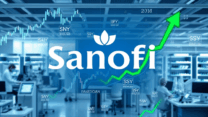
US Dividend Growth Stocks: How to Maximize Income & Long-Term Gains Now

In today’s uncertain economic climate, dividend growth investing has become a powerful strategy for American investors seeking both reliable income and long-term capital appreciation. Unlike high-yield stocks that may sacrifice stability for returns, dividend growth stocks offer a balanced approach—providing increasing income over time while preserving and growing capital. In this article, we’ll explore how to identify top U.S. dividend growth stocks, how to build a resilient portfolio, and strategies to maximize both income and total returns.
What Are Dividend Growth Stocks?
Dividend growth stocks are shares of companies that consistently increase their dividend payouts year after year. These companies typically have strong cash flows, disciplined capital allocation, and a long-term focus on shareholder value. Unlike fixed-income investments, dividend growth stocks can help investors stay ahead of inflation by increasing income over time.
According to the Dividend Aristocrats Index, which tracks S&P 500 companies that have raised dividends for at least 25 consecutive years, these stocks have historically outperformed the broader market with lower volatility (Source: S&P Dow Jones Indices).
Why Invest in Dividend Growth Stocks?
There are several compelling reasons to include dividend growth stocks in your portfolio:
1. Reliable Income: These stocks provide a growing stream of income, which is especially valuable during retirement.
2. Inflation Hedge: Rising dividends help offset the impact of inflation.
3. Capital Appreciation: Companies that grow dividends often have strong fundamentals, leading to long-term stock price growth.
4. Tax Efficiency: Qualified dividends are taxed at a lower rate than ordinary income for most U.S. investors.
Top Sectors for Dividend Growth Investing
While dividend growth opportunities exist across the market, some sectors have a stronger track record:
– Consumer Staples: Companies like Procter & Gamble and Coca-Cola have long histories of dividend increases.
– Healthcare: Firms such as Johnson & Johnson offer stability and consistent dividend growth.
– Industrials: Companies like 3M and Emerson Electric are known for their resilience and dividend reliability.
– Utilities: While traditionally lower growth, some utilities have adopted dividend growth policies supported by regulated cash flows.
How to Identify High-Quality Dividend Growth Stocks
When evaluating dividend growth stocks, consider the following metrics:
– Dividend Growth Rate: Look for companies with a 5-10% annual dividend growth rate.
– Payout Ratio: A sustainable payout ratio (typically under 60%) indicates room for future increases.
– Free Cash Flow: Strong and consistent free cash flow supports dividend payments.
– Debt Levels: Companies with manageable debt are better positioned to maintain dividends during downturns.
Building a Dividend Growth Portfolio
To build a diversified dividend growth portfolio:
1. Diversify Across Sectors: Avoid overconcentration in one industry.
2. Focus on Dividend History: Prioritize companies with a long track record of increases.
3. Reinvest Dividends: Use a DRIP (Dividend Reinvestment Plan) to compound returns.
4. Monitor Fundamentals: Regularly review earnings, payout ratios, and debt levels.
Tax Considerations for U.S. Investors
Qualified dividends are taxed at favorable rates—0%, 15%, or 20% depending on your income level. Holding dividend growth stocks in tax-advantaged accounts like Roth IRAs or 401(k)s can further enhance after-tax returns.
Common Mistakes to Avoid
– Chasing Yield: High yields can be a red flag. Focus on sustainable growth.
– Ignoring Valuation: Even great companies can be overvalued.
– Neglecting Diversification: Spread risk across multiple sectors and companies.
Conclusion: A Long-Term Strategy That Works
Dividend growth investing is not a get-rich-quick scheme—it’s a disciplined, long-term strategy that rewards patience and consistency. By focusing on quality companies with a proven ability to grow dividends, investors can build a portfolio that generates increasing income and strong total returns over time.
Disclaimer
This article is for informational purposes only and does not constitute financial, investment, or tax advice. Always consult with a licensed financial advisor or tax professional before making investment decisions. Past performance is not indicative of future results. Investing involves risk, including the potential loss of principal.







